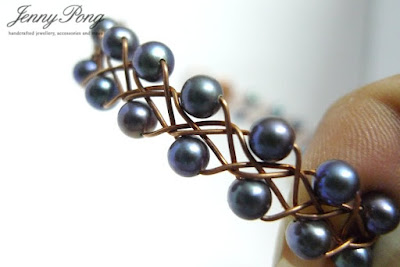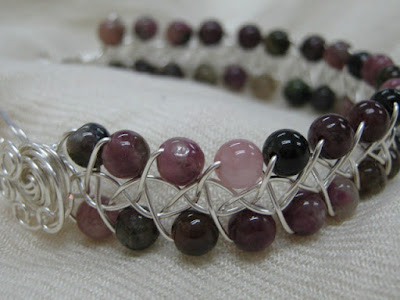.jpg)
.jpg)
.jpg)
.jpg)
LEVEL: Intermediate
This tutorial consist 25 easy to follow steps.
Braiding has been around for century and it is nothing new. In this tutorial, you will learn how to make a braided bracelet using a simple yet versatile braiding technique which you can apply to rings, earrings, bracelet and other type of jewelry.
Once you get the hang of it, you can't stop braiding more and more! This can be really addictive and fun project at the same time to see how the wires inter-twining with each other and before you know it, you have completed the bracelet in less than an hour.
Up for the challenge and get this tutorial today.
MATERIALS:
- 22-gauge round dead soft wire
- 40 5mm round fresh water pearls
TOOLS:
- Round nose pliers
- Wire cutters
- Chain nose pliers
- Bracelet Mandrel
- Ruler
DELIVERY:
The PDF format document will be sent to the E-mail address set in your Paypal account within 24 hours or lesser upon receipt of payment.
IMPORTANT NOTICE: This listing is exclusive of any materials and tools used.
PRICE: USD5.00


 It is consistent both front and back and it sets the drilled stone perfectly! The best of all it took me just an hour to make this ring. Entirely made using the same weaving technique as my latest Tutorial "Chain-Link Bezel Cabochon".
It is consistent both front and back and it sets the drilled stone perfectly! The best of all it took me just an hour to make this ring. Entirely made using the same weaving technique as my latest Tutorial "Chain-Link Bezel Cabochon". 





 Want to learn how to make these swirls, please check out my tutorial on Smokey Topaz Swirls Pendant.
Want to learn how to make these swirls, please check out my tutorial on Smokey Topaz Swirls Pendant.









 Do check my tutorials, if you are interested to make your own braided bracelet.
Do check my tutorials, if you are interested to make your own braided bracelet. .jpg)
.jpg)
.jpg)
.jpg)






.jpg)
.jpg)
.jpg)








.JPG)
